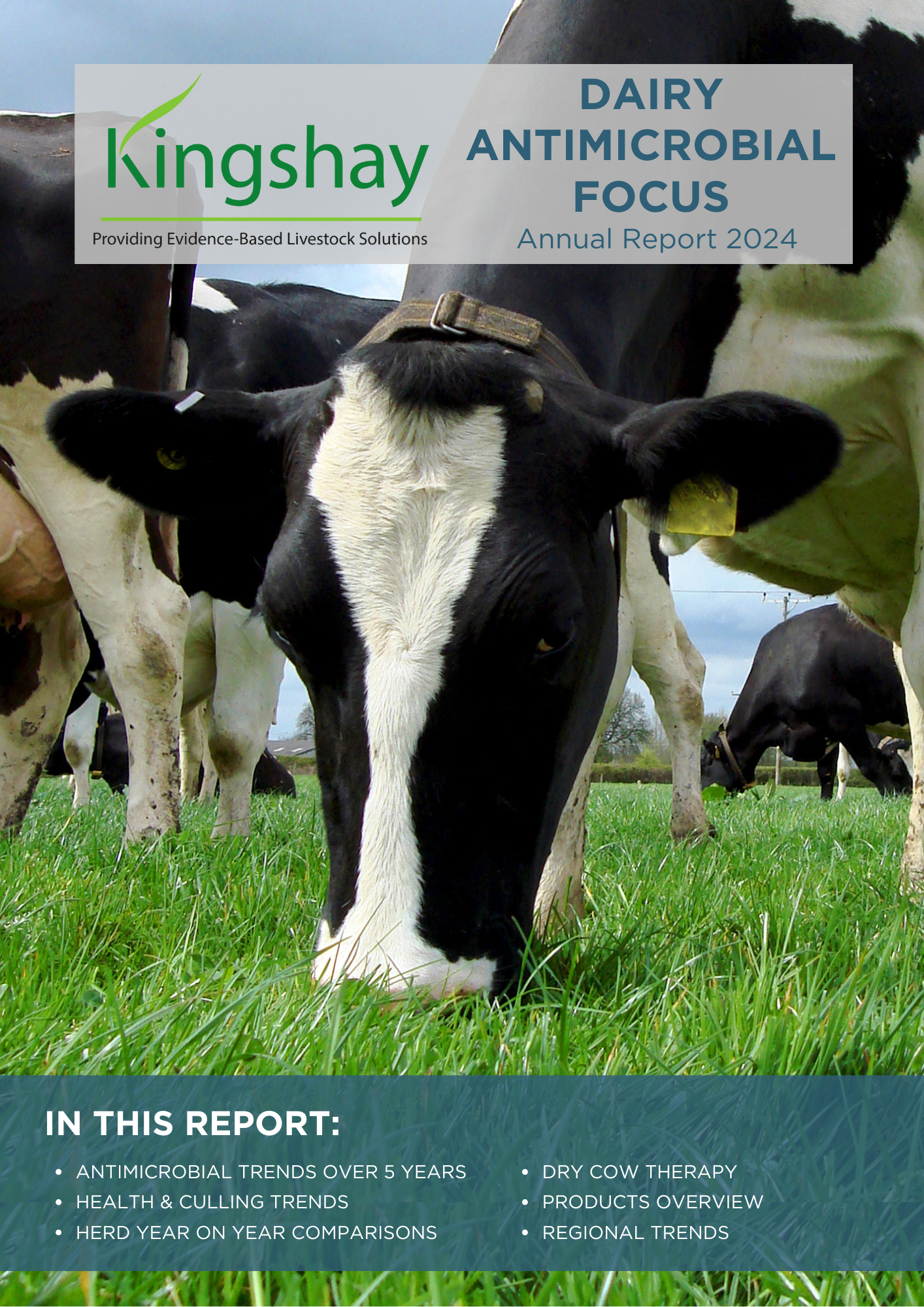UK dairy farmers continue to reduce antimicrobial use.

The use of antimicrobials on UK dairy farms has reduced by almost a fifth in the past five years, according to the latest Dairy Antimicrobial Focus Report from Kingshay.
The report, compiled by Kingshay, part of the VetPartners group, is based on data from 879 dairy herds across the UK using their Antimicrobial Monitoring Service for the period ending March 2024.
The report shows that individual herd antimicrobial use ranged from 0.02 to 90.45 mg/PCU. However, average total antimicrobial usage for the year was 12.7 mg/kg PCU – down from 13.7 mg/PCU in 2023 and 15.7 mg/PCU in 2020.
Westpoint Farm Vets’ senior clinical director and Kingshay report co-author, Tim Potter, says the figures show that industry efforts to reduce antimicrobial use are paying dividends.
“The aim isn’t for no antimicrobials to be used in farmed animals, but instead for their use to be reduced as much as possible whilst still maintaining their availability and effectiveness to treat disease,” adds Dr Potter.
“We are pleased to report that the latest data suggests that neither herd health or milk production have been impacted by this reduction in use; in fact, as total antimicrobial use has reduced, mastitis rates and bulk somatic cell counts have also reduced, and there hasn’t been a rise in culling for mastitis or an increase in the rate of cows leaving the herd.”
Furthermore, the report, which also includes health data from Kingshay’s Health Manager Service this year for the first time, found that mastitis rates reduced to 26 cases per 100 cows – down from 29 in 2023 and 42 in 2020.
Antibiotic dry cow tube usage declined by 5.8% in the year to 0.425 DCDVet - the defined course dose - while lactating cow tube usage reduced by 10.2% to 0.386 DCDVet.
“The treatment of mastitis is one of the key reasons for using antimicrobials in the dairy sector, but the fall in the number of cases and associated decrease in tube usage demonstrates the dairy sector’s commitment to addressing the challenge of this disease,” says Dr Potter who co-authored the report with Emma Puddy, Farm Services specialist at Kingshay.
“The dairy industry has made huge strides in its efforts to reduce the use of highest priority, critically important antimicrobials and the number of herds using any at all has dropped by nearly three-quarters since 2020 to 3.9%,” says Ms Puddy.
Despite this progress, Ms Puddy believes there is room for continued improvement – especially in the 25% of herds using the most antimicrobials.
“The impact of these higher users is significant as they account for 50% of total group usage,” she adds.
Going forward, Ms Puddy says dairy producers – especially those in that top quartile – must continue to work with their vets and advisers to reduce their reliance on antimicrobials.
“Individual farm usage can vary dramatically year-on-year, often in response to disease outbreaks, but the key to continual reductions in the industry is that any increase in usage is addressed at the time with remedial steps to address specific disease challenges.
“It is vital that all UK dairy farmers work closely with their vets to drive down antibiotic use across the board.”
The 2024 annual Dairy Antimicrobial Focus Report can be accessed via the Kingshay website www.kingshay.com/
